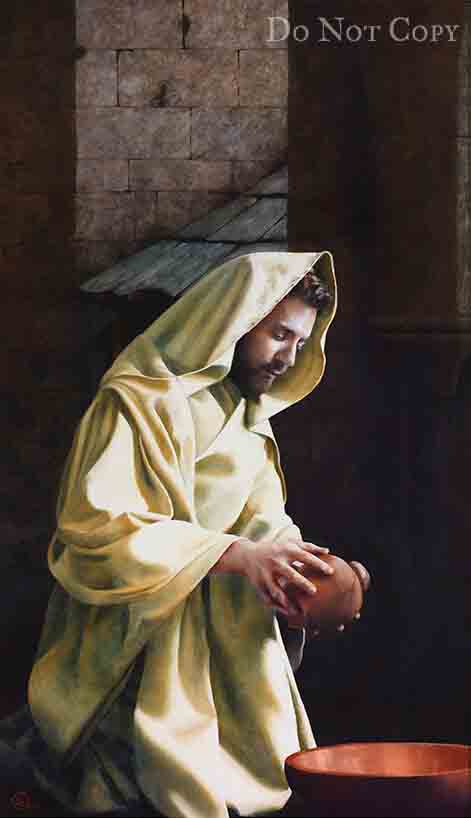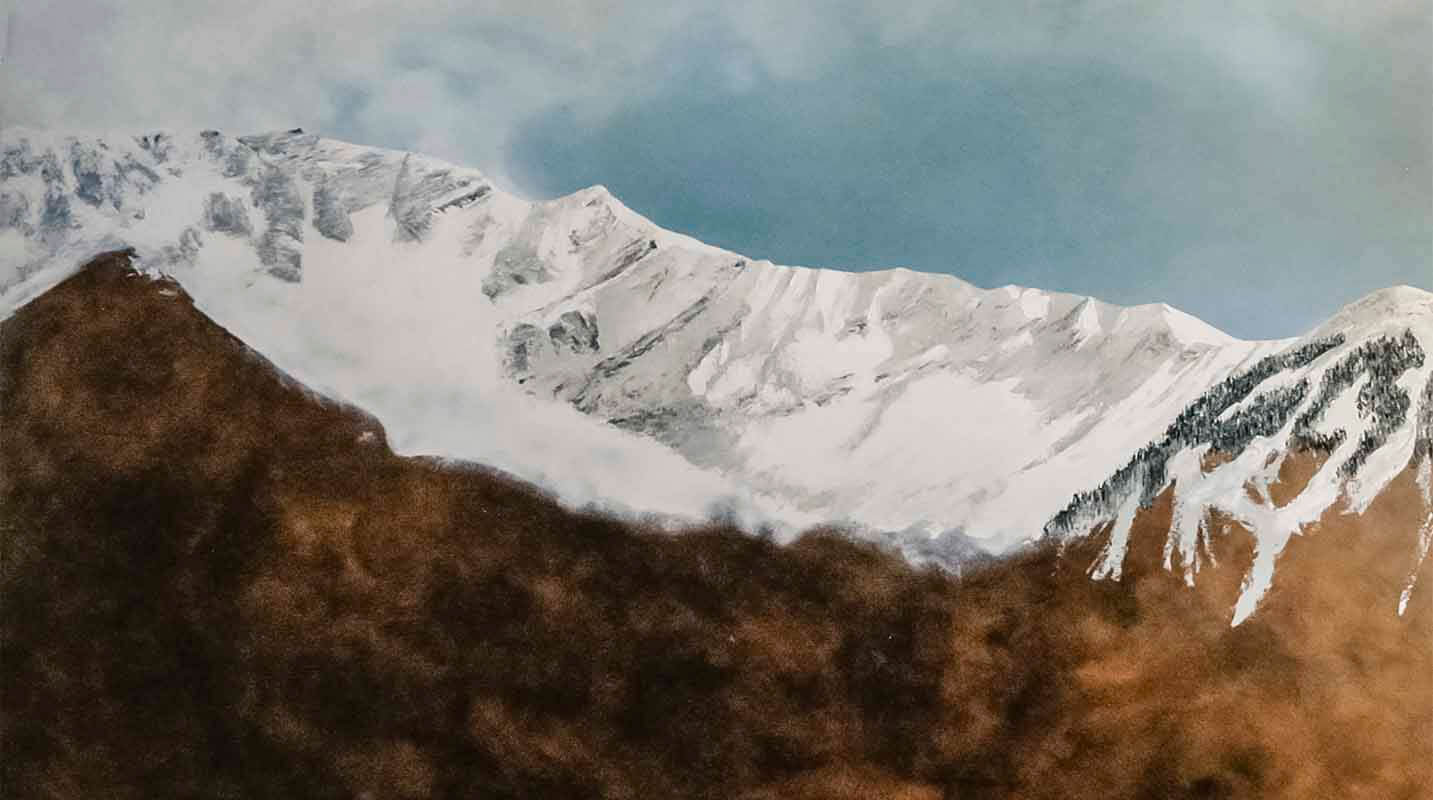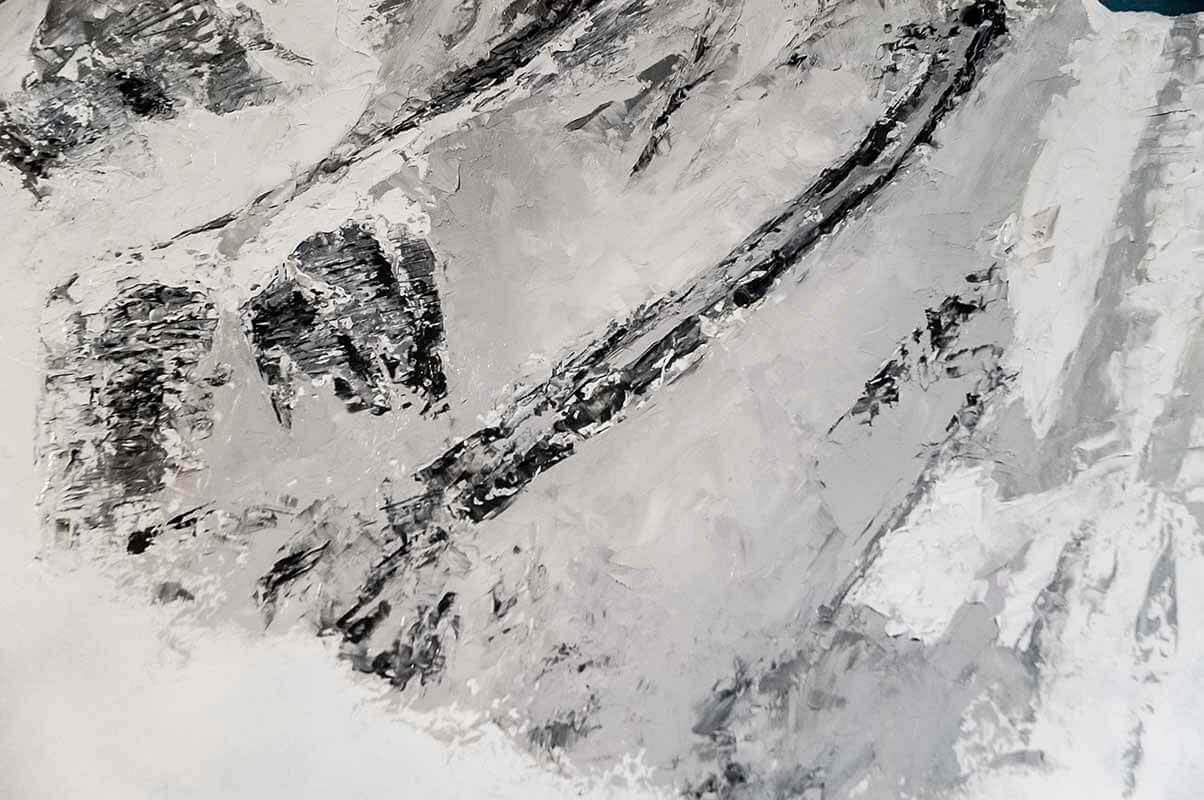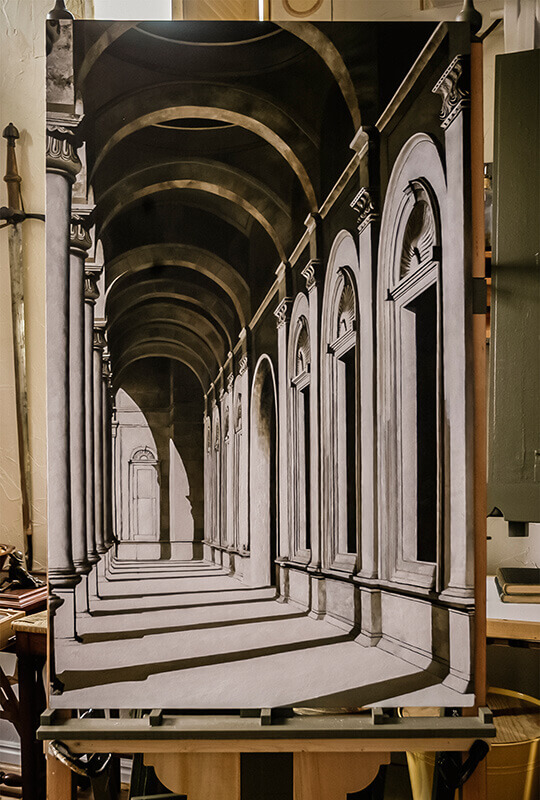A layered approach to problem solving
By Al R. Young
This original artwork is unavailable for purchase or viewing online because it and its copyright are exclusive to temples. |
| The Lord Hath Anointed Me by Al R. Young. |
Dimensions (unframed width x height)
30 in. x 51 3/4 in.
Support
Panel
Milestones
Costume and initial photo-shoot completed - May 2011
Composition and support prepared - April 2012
Grisaille completed - August 2012
Painting completed - November 2013
Based on regular entries in the project journal for this painting, creation of the artwork involved approximately 75 session (from composition and panel preparation to completion of brushwork. Sessions can last as long as eight hours or be as short as half an hour.
Equipment
Creating a painting often involves creating or modifying tools or making improvements to the studio itself. This painting project necessitated the following activities in terms of tools, supplies, and operations.
Bedpost easel
Costumes, miniatures, and props
Sometimes these items must be created at the Studios, sometimes they are purchased for the project, and sometimes items created or purchased for other projects are re-used or modified. This section does not list every costume element, miniature, or prop that may have been involved in the project. Instead, we include items whose story might prove interesting or useful.
Oil cruse - Handmade by Ashton Young
Robe - Designed and sewn by the artist
Methodology
This section presents only one or two items that may be of interest to professional artists, amateurs, and others interested in the work of the Studios.
Rendering, or painting, is almost nothing but problem-solving. Successful painting involves anticipating problems, not over-reacting when confronted with them, knowing when to address a problem, and figuring out how to do so. There are so many problems and they are so bewilderingly complex in their interrelationships that the ability to concentrate depends (as always) upon what can and should be ignored at any particular time.
During composition, I address issues such as scale, proportion, configuration of elements, and associated details, not the least of which is whether the composition conveys the insight and emotion central to the concept or inspiration present in its genesis. Composition (just like any other stage in the painting process) is a balancing act in which one of the primary objectives is to resolve as many problems as possible while leaving open the door to serendipity. It has been my experience that experience is the only way to know what and how much to resolve during each phase of a project in order to preclude insoluble problems later on, as well as problems that, though soluble, can cause great difficulty. Thus, rendering or painting a subject is—at least, for me—a phased activity in which each stage focuses on resolving certain kinds of problems.
Once design or the compositional phase has addressed the kind of issues just mentioned, an imprimatura or underpainting is usually my choice as the means of rendering a composition on a painting ground. That means that when I start the brushwork for a painting, the ground is completely blank (consisting of either toned or untoned gesso that was also applied by hand and containing no marks or images of any kind). Furthermore, no image(s) or mark(s) of any kind are made on or in any layers in the painting, but what those marks are made by my hand by means of brush, knife, rubber wedge, rag, or the hand itself.
 |
| This photograph was taken while creating the imprimatura for the mountains in Den Kommende Vinteren. The underpainting of the sky was completed earlier and had already been glazed. While the underpainting of the sky was done entirely by brush, the underpainting for the mountains was done almost entirely by knife. |
 |
| This detail from the imprimatura of the mountains shows the high-contrast and highly textured qualities of the hand-done underpainting for the mountains. |
I almost never render an entire composition in a monochromatic underpainting. Instead, my approach to brushwork varies according to subjects. Consequently, the rendering of a composition can have as many rendering methodologies as the composition has kinds of subjects in it. For example, my skies are usually rendered initially in blue and white, then refined with glazes. Similarly, I prefer to render figures (at least skin tones) in the basic palette I use for skin tones instead of starting with a monochromatic rendering. Architectural subjects, however, as well as complex botanical regions of a composition, lend themselves to monochromatic underpaintings; nevertheless, that is not a hard and fast rule either.
 |
| This is the monochromatic imprimatura for the entire background of The Windows Of Heaven. |
Tags: The Windows Of Heaven, 2015, Project commentaries, Tips and techniques
Browse articles by year: 2024 . 2023 . 2022 . 2021 . 2020 . 2019 . 2018 . 2017 . 2016 . 2015 . 2014 . 2013 . 2012 . 2011 . 2010 . 2009 . 2008 . 2007 . 2006 . 2005 . 2004 . 2003 . 2002 . 2001 . 2000 . 1999 . 1998 . 1997 . 1996
Browse articles by topic: Art lessons . BenHaven Archives . Blank art diaries . Fine art photography . Framing . Illustration . Inspiration and creativity . Isles of Rune . Limited Editions Collection . My Fathers Captivity . News . Novellas . Oil paintings and prints . Operations announcements . Orders and shipping . Overview . Portfolios . The Papers of Seymore Wainscott . Project commentaries . Recipes by Nancy Young . Recommended reading . Recommended viewing . Temple artworks . The Storybook Home Journal . Tips and techniques . Tools supplies and operations
Browse articles by topic: Art lessons . BenHaven Archives . Blank art diaries . Fine art photography . Framing . Illustration . Inspiration and creativity . Isles of Rune . Limited Editions Collection . My Fathers Captivity . News . Novellas . Oil paintings and prints . Operations announcements . Orders and shipping . Overview . Portfolios . The Papers of Seymore Wainscott . Project commentaries . Recipes by Nancy Young . Recommended reading . Recommended viewing . Temple artworks . The Storybook Home Journal . Tips and techniques . Tools supplies and operations